A mushroom of legend. For over 1000 years, the Japanese have spoken poetically about matsutake mushrooms as a symbol of autumn and longevity, with haikus and plenty of ceremony devoted to them.
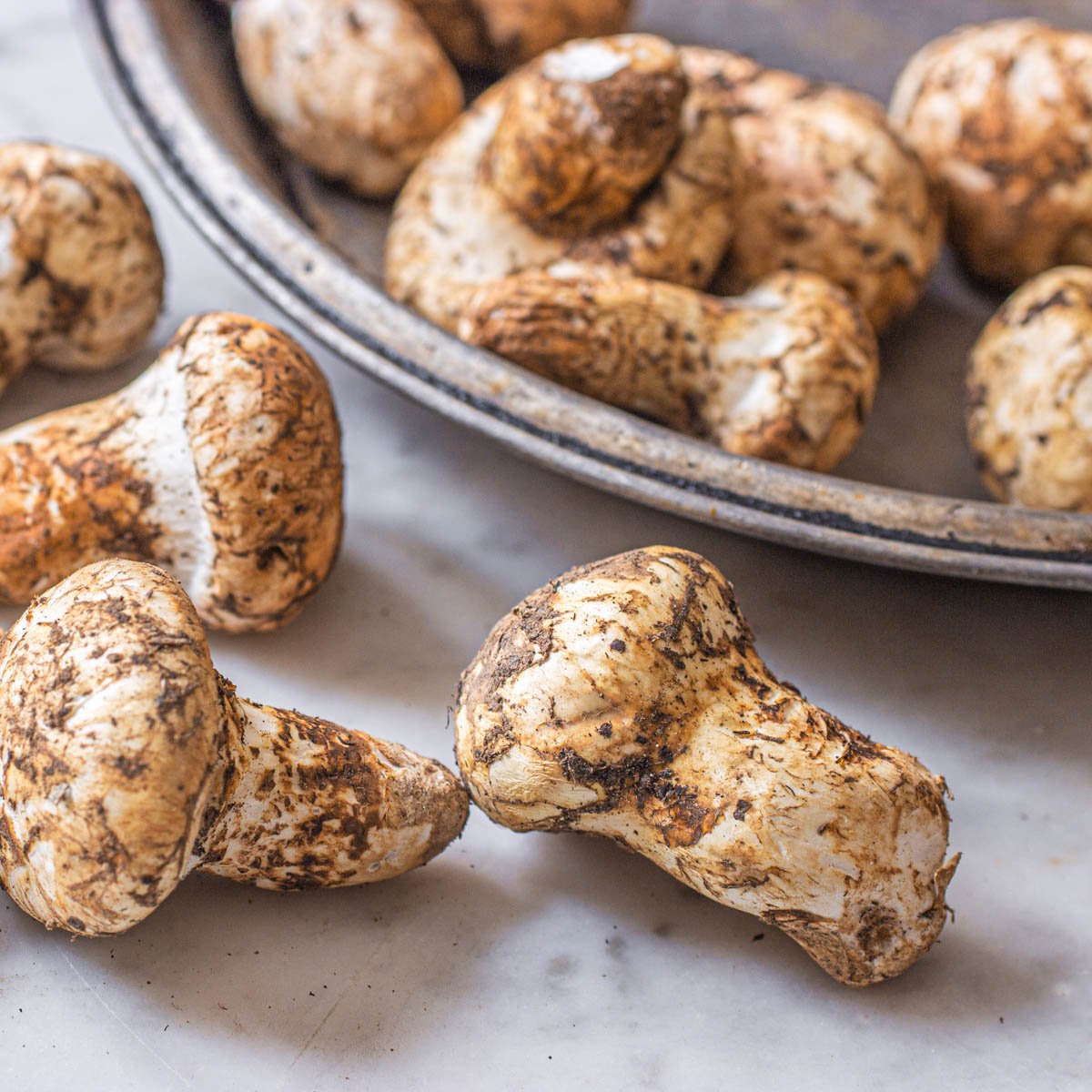
These, along with Maitake, were two mushrooms known to be collected by samurai.
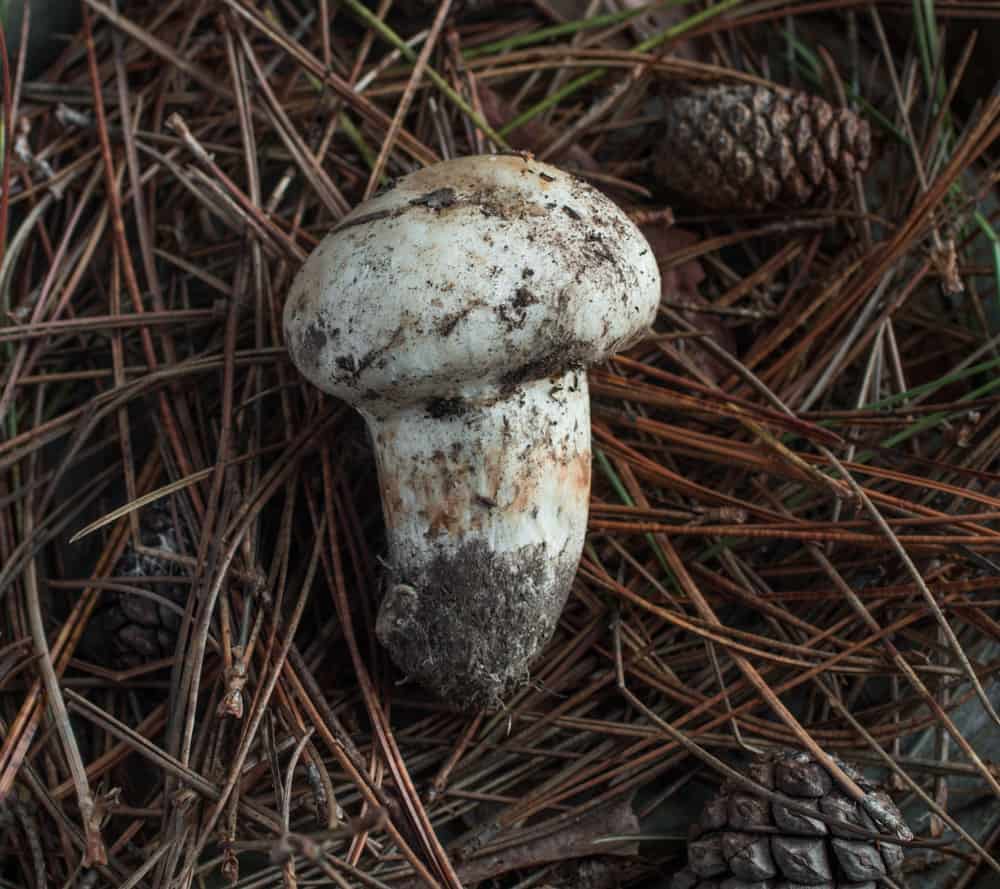
Species
Like other prized mushrooms, each species of matsutake has a symbiotic relationship with trees. The exact species of host tree will vary from place to place, but they will always be pine trees. Here's a list of current species.
Tricholoma murrillianum
The variety harvested in the Pacific Northwest and sold commercially. One commercial hunter I know says lodgepole pine are his best producers.
Tricholoma magnivelare
The species found in Eastern North America. They love red pine plantations and jack pine.
Tricholoma neausoesum
Known as the Swedish matsutake, popularized by Chef Magnus Nilsson and others.
Tricholoma matsutake
The real deal. These are the mushrooms harvested in Japan and Korea that are the most prized.
Tricholoma mesoamericanum
A more recently identified matsie from Mexico.
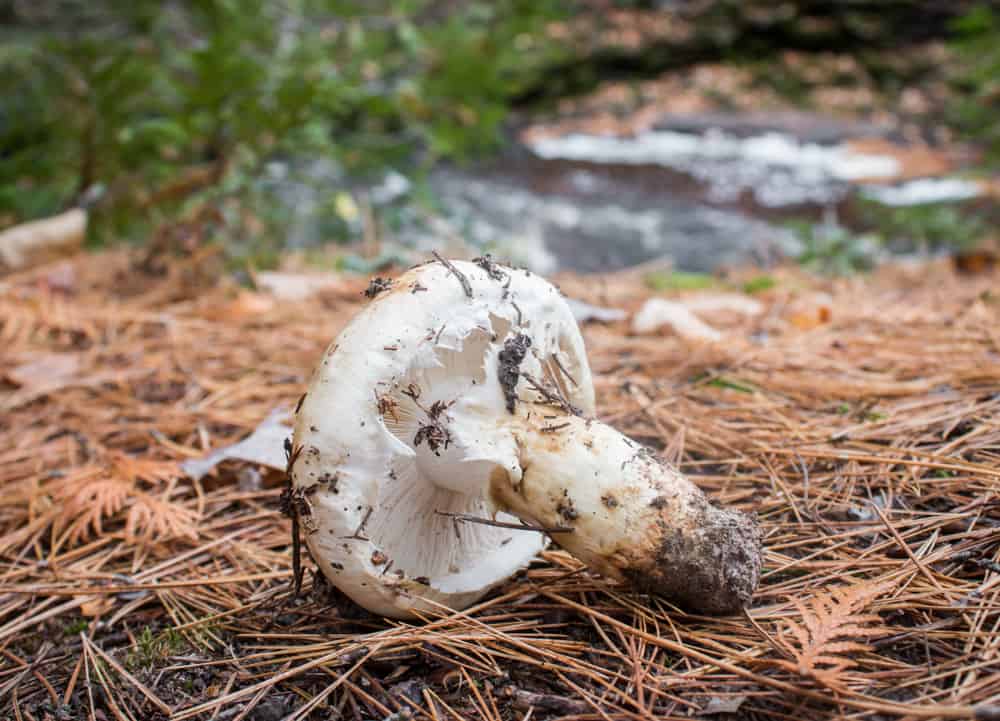
Commercial sale
Matsutake are one of the most coveted mushrooms, typically available in the fall through specialty suppliers.
From Mycophilia:
"In 1992, the New York Times reported that Japanese businessmen spent as much as 240$ American for a box of three or four mushrooms"
"In 2007, The North Korean leader Kim Jong II gave President Roh Moo-hyun of South Korea 500 such boxes equaling 4 tons of matsutake mushrooms prior to a summit meeting."
Age and Grade
These are sold under number a system for chefs: 1, 2, 3, etc. 1's, the young buttons with an unbroken veil have the most potent flavor and the highest price. After the veil breaks and the mushroom has started to mature the aroma and flavor become weak.
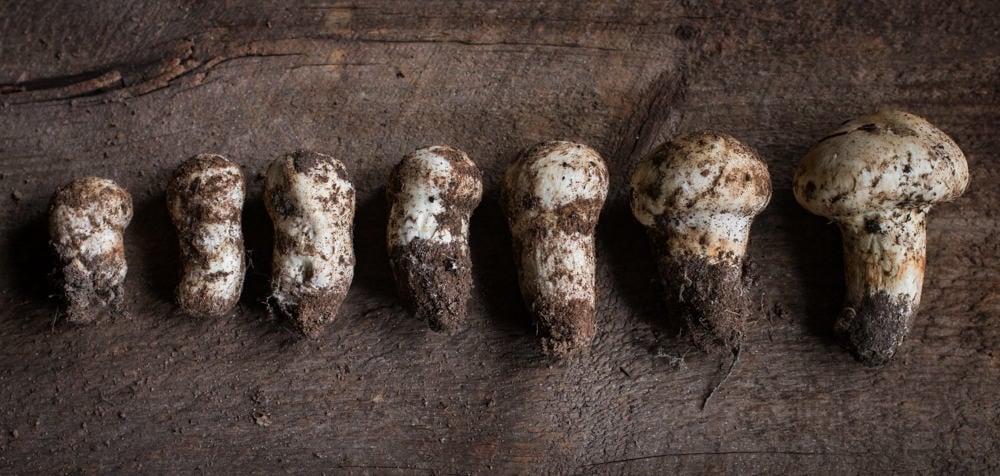
Habitat: loss and gains
Unfortunately, the harvest in Japan has been declining from habitat loss. To meet the demand (they're impossible to grow), matsutake recently discovered in China, Korea, Sweden, Mexico are filling the gap along with the Pacific Northwest, which exports more than any place in the world.
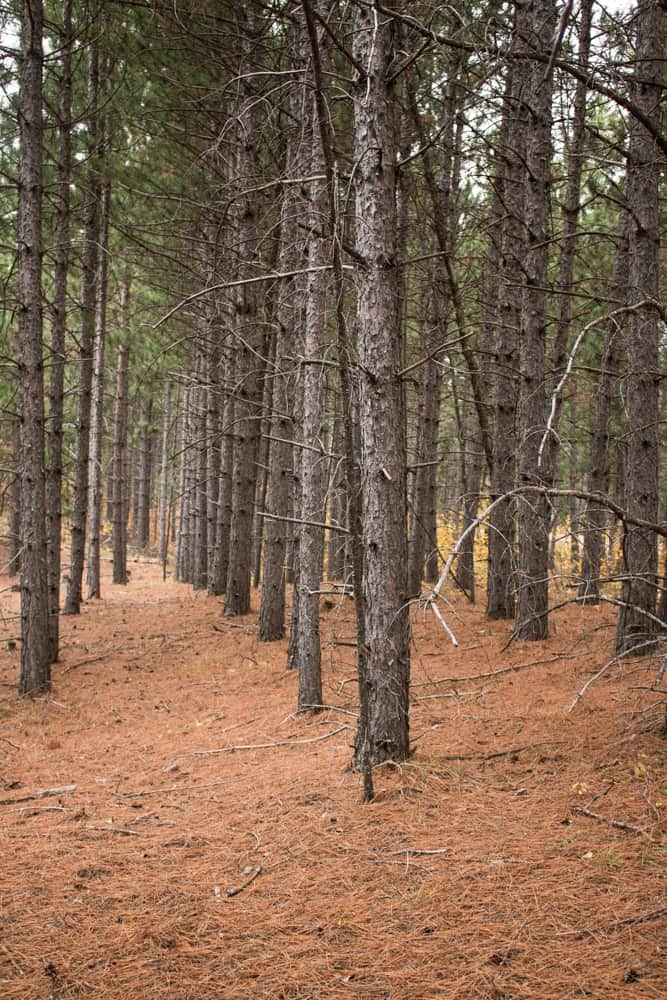
Commercial pickers roam pine forests in the Pacific Northwest each fall on the hunt for them, and locations are closely held secrets. There's reports of people hiding out on trails robbing commercial pickers at gunpoint as well as much scarier tales.
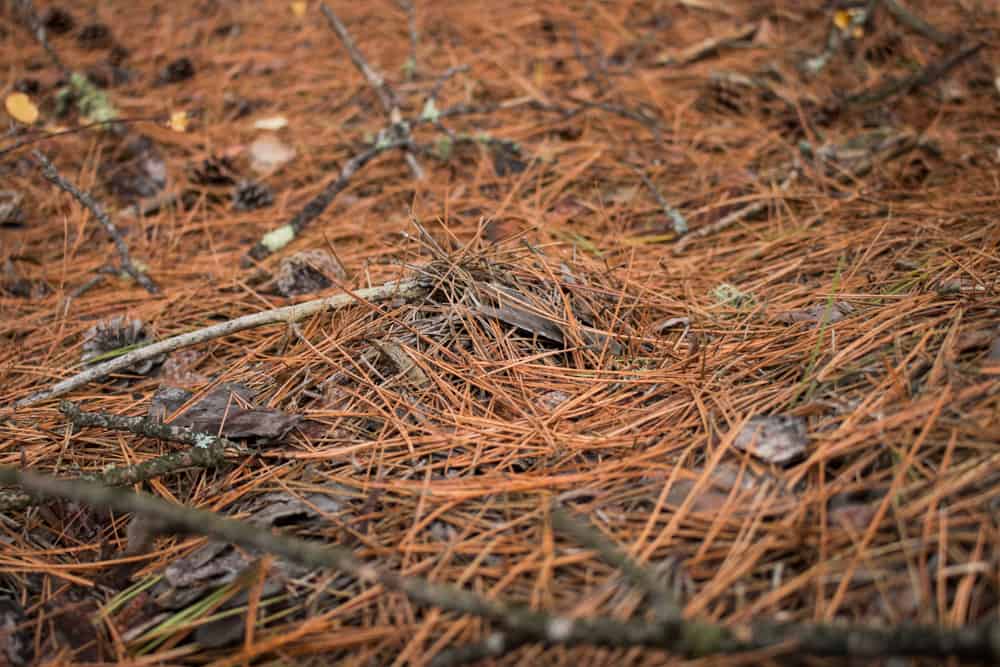
From Mycophilia:
"Stories about matsutake related violence in national forests (one man shot through the heart, his mushrooms missing; five dead in a prime matsutake patch, etc.) Have receded into legend."
There's a silver lining though. In Eastern North America, matsutake numbers are increasing, and, according the book "The Mushroom at the End of the World" they seem to be slowly infiltrating red pine plantations throughout Eastern North America. My own experience supports this too.
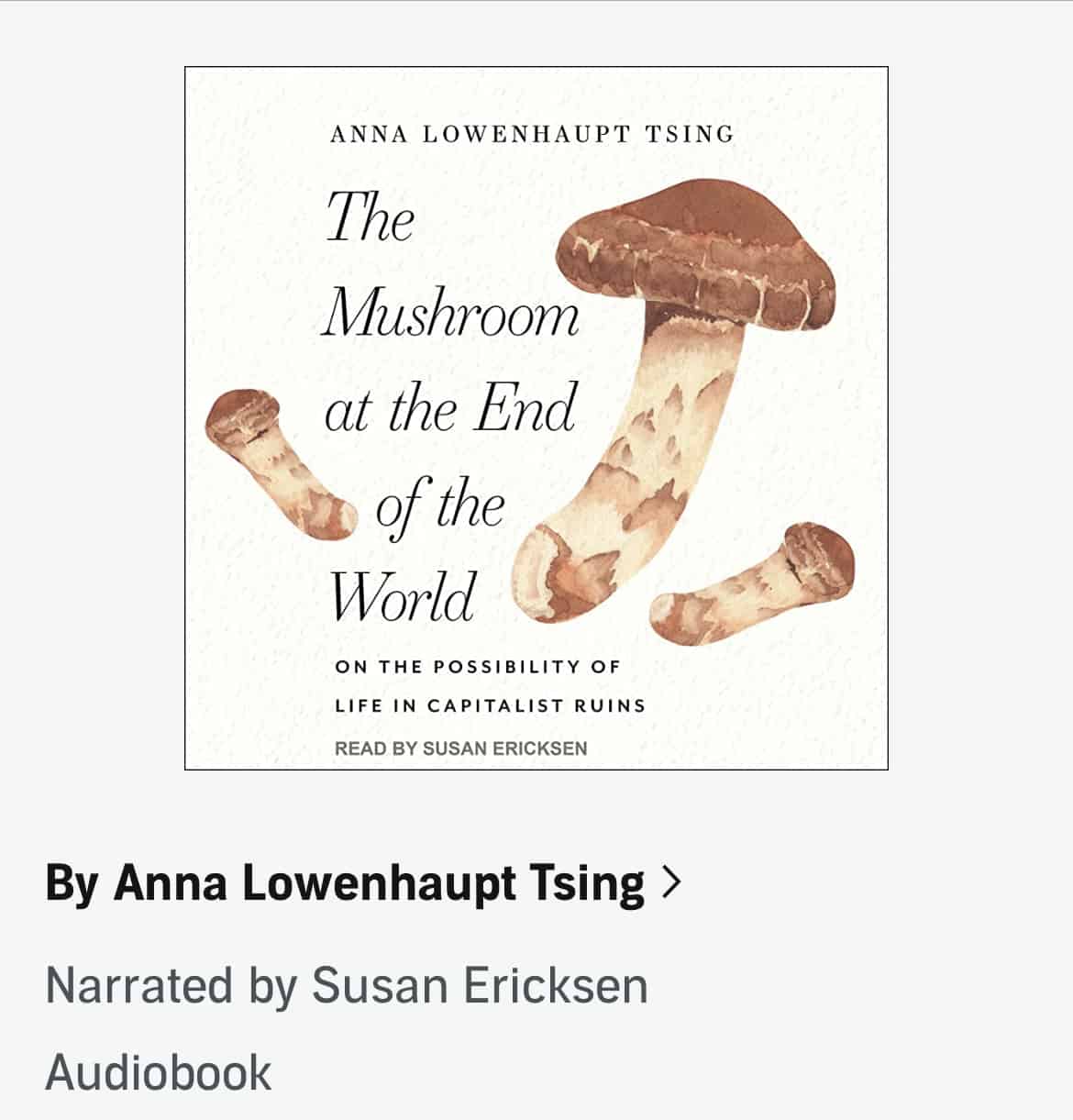
Identification
True matsutake:
- Have a veil covering the gills when young.
- Have a powerful aroma when young that may smell like pine soil, cinnamon candy, and radishes.
- Always grow with coniferous trees-never deciduous.
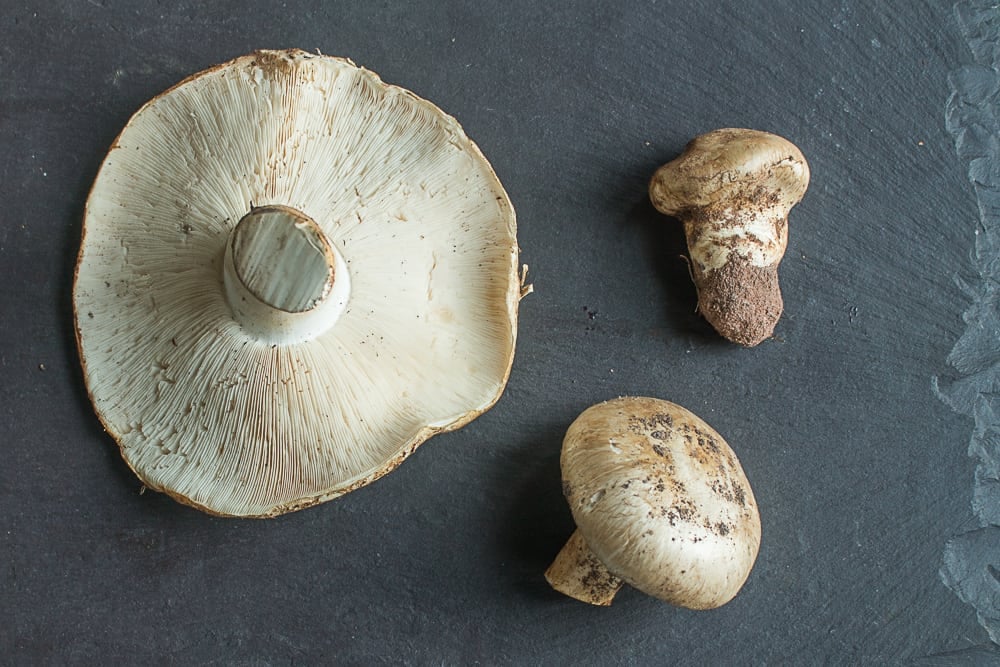
Look A Likes
There's a few look-a-likes that may grow in similar habitat at the same time. Although there's no poisonous look alikes in the Midwest, on the West Coast there's Amanita smithiana, which is lethally poisonous and has been consumed by amateur foragers in recent years.
Amanita Smithiana
These amanitas unfortunately grow at the same time and potentially in the same places as matsutake in the Pacific Northwest. The mature mushrooms can be separated from matsutake as they lack the spicy, cinnamon-esque aroma and grow with a stem deeply rooted in the ground. Younger mushrooms, especially for beginners can be trickier.
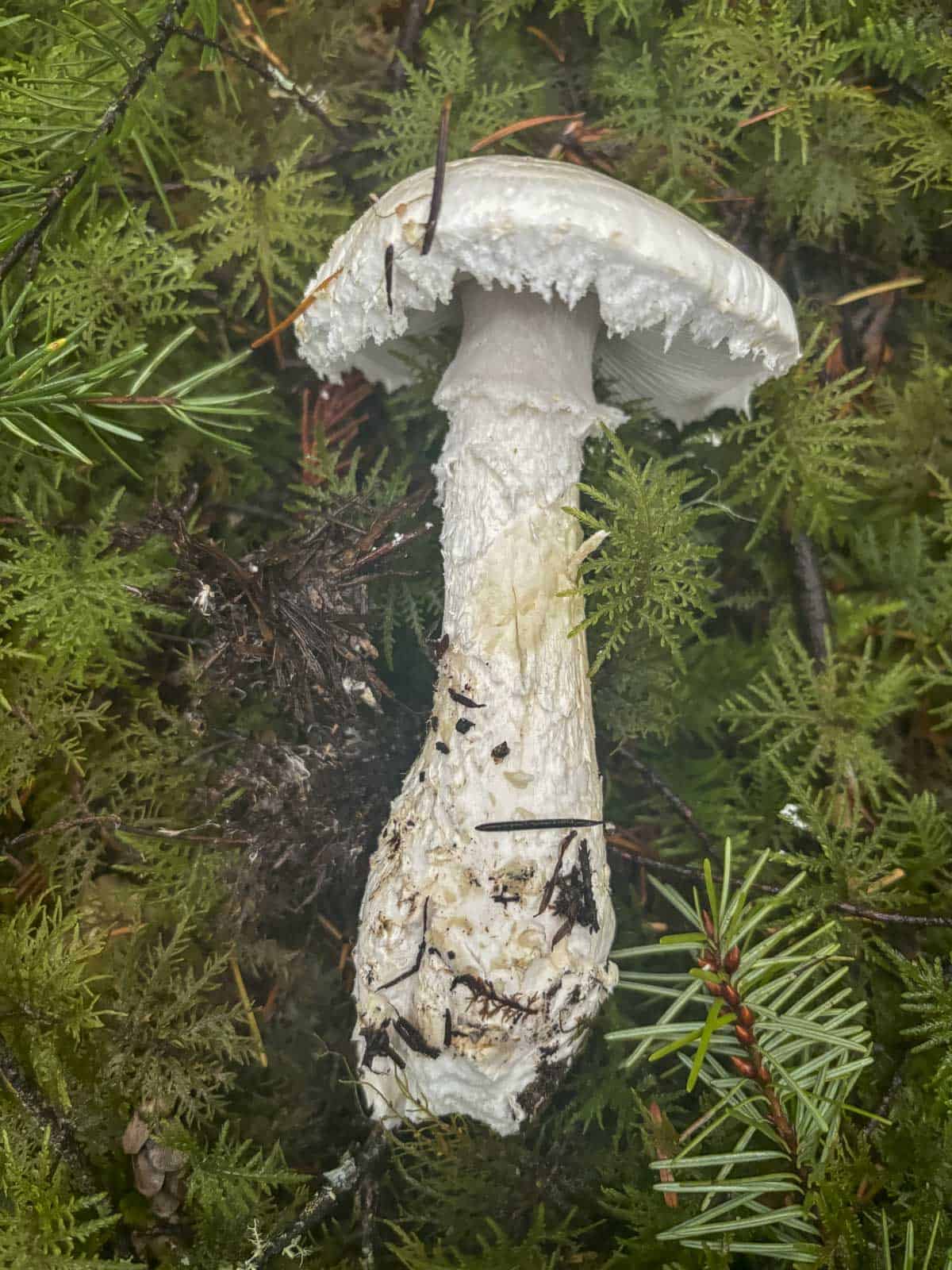
The mushrooms contain allenic norleucine and chlorocrotylglycine, which can cause nausea, vomiting, diarrhea, abdominal pain, and most importantly, kidney failure and death. In order to pick matsutake in the Pacific Northwest you must be able to identify them beyond a shadow of a doubt.
Tricholoma caligatum
The most common matsutake look-a-like is Tricholoma caligatum. Unlike true matsutake, these don't have a strong pine aroma, may taste bitter, and only grow with hardwoods.
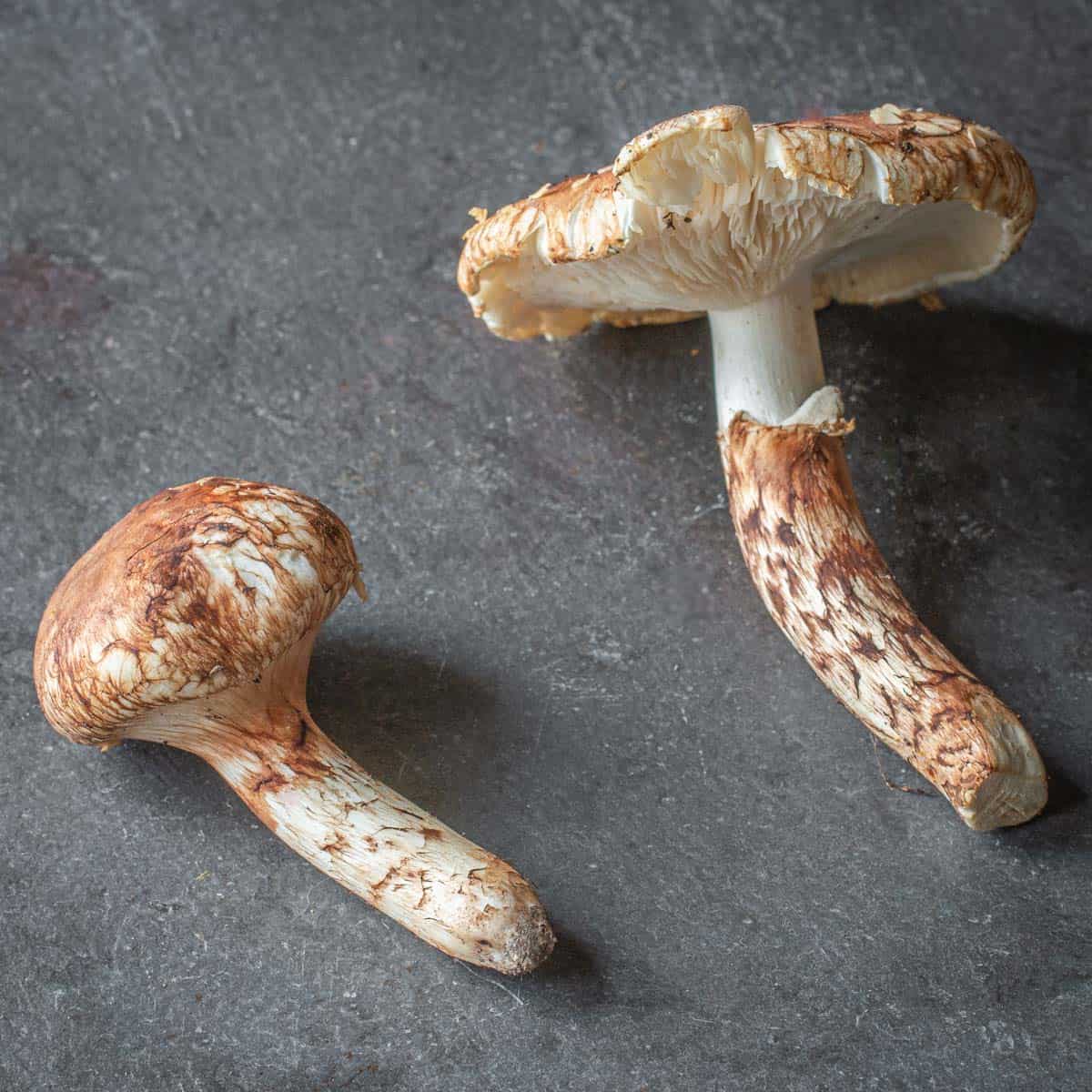
You will never see them growing near red pine, jack pine, or other matsutake host trees. T. caligatum is edible, but it's nothing special.
Cathelasma imperiale
I haven't seen these yet, and some hunters have told me it's more rare than Matsutake themselves. It grows with conifers and is said to be a mediocre edible.
Midwestern Matsutake
Matsutake grow in the Midwest, but those places are rare. To hunters who know, they can be a holy grail of mushrooms. If you want to quest for them yourself, see my post: Hunting the Midwestern Matsutake: II.
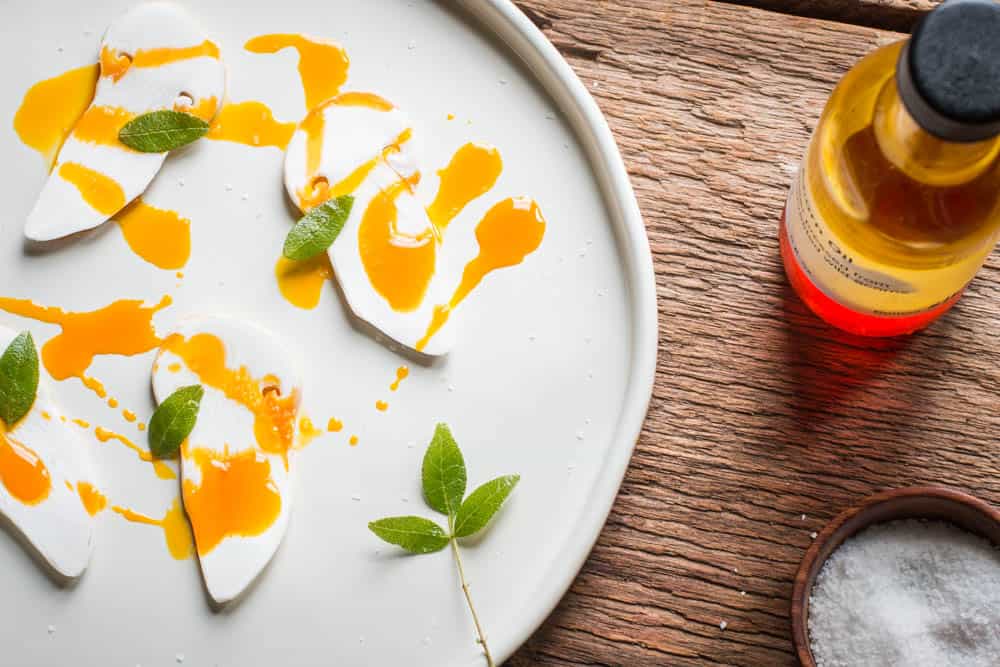
Cooking
The flavor of matsutake is deeply connected to Japanese food, so that's the best place to get inspiration for your matsutake recipes. First you'll need to clean them, and that can be difficult.
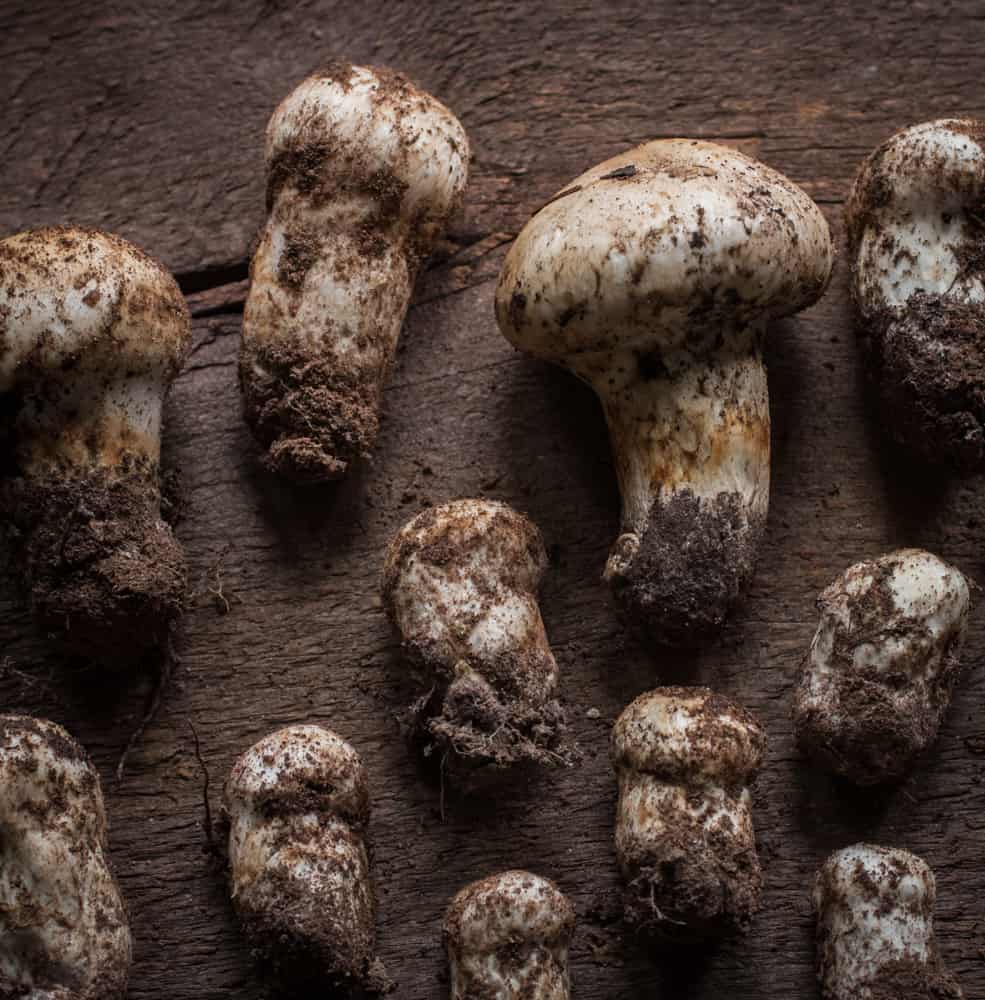
Cleaning
Unless you're picking yourself, the mushrooms have probably been sitting in a grocery store. Sitting on a shelf they dry out, making sand and dirt stick to them that can be difficult to remove. To clean matsutake, I like to peel them with a vegetable peeler.
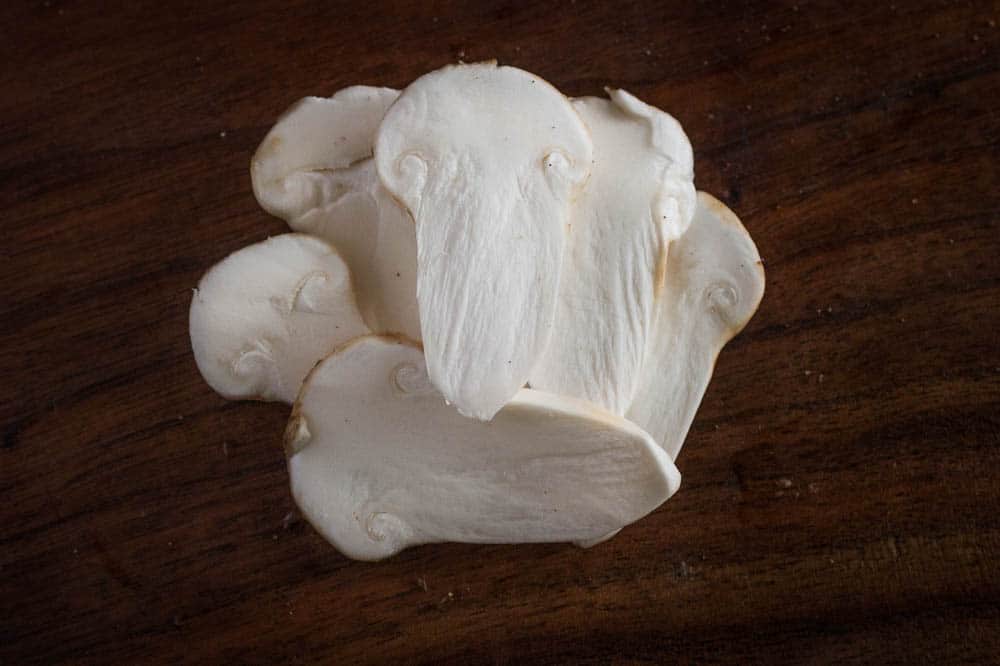
Flavor
With pine mushrooms, it's all about the aroma and flavor. I've cooked lots of wild mushrooms, but matsutake are in a class of their own. They're uniquely flavored and hard to describe, with an aroma powerful that some people won't like them. To me, it's one of nature's most incredible flavors, and the definition of delicacy.
Mycologist David Arora describes the aroma as a combination of red hots and dirty socks. Personally, I think they taste like the essence of pine soil, with a little spice thrown in.
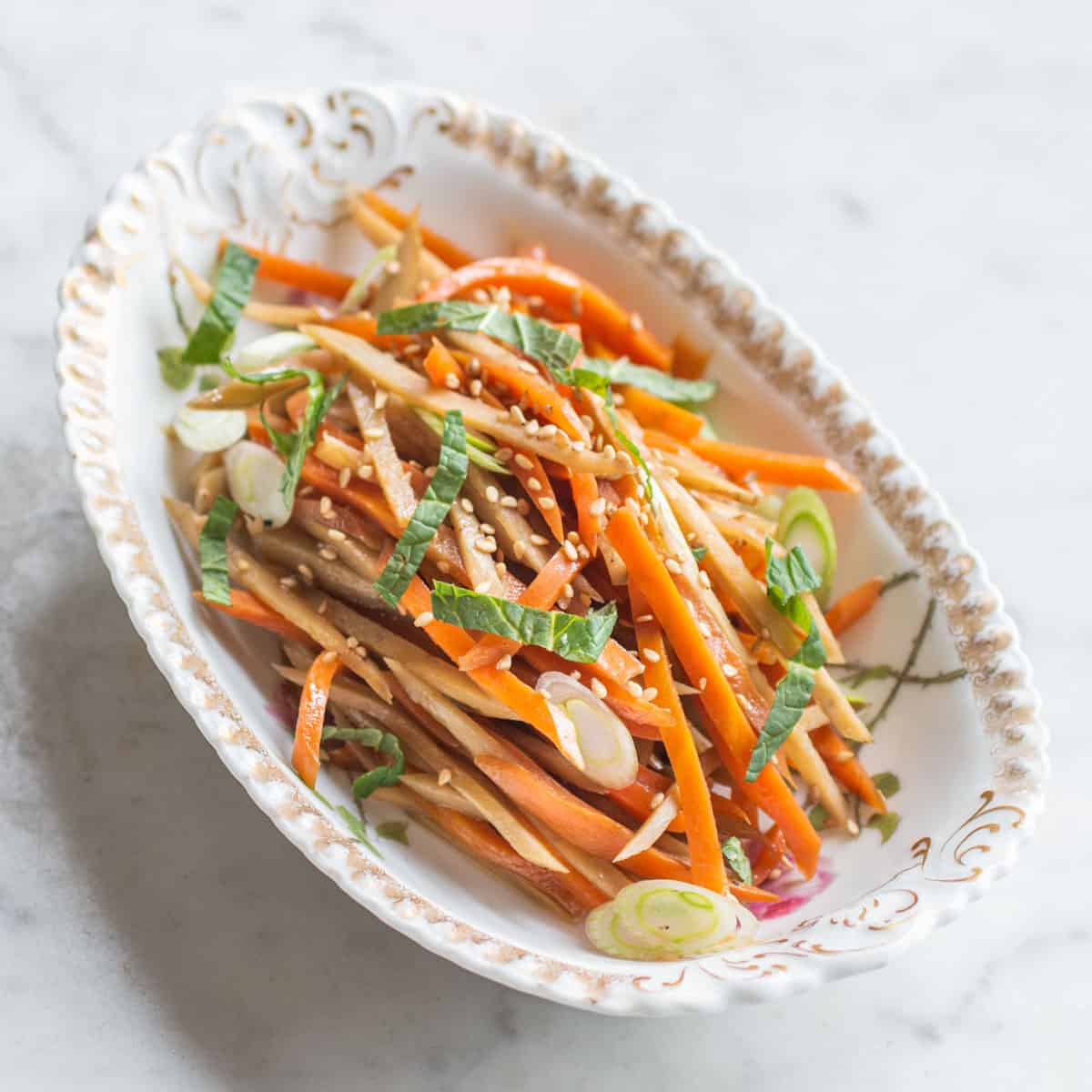
Dried
You might see dried matsutake for sale, or be tempted to dehydrate mushrooms if you have a good harvest. Unfortunately Matsutake lose their flavor after drying.
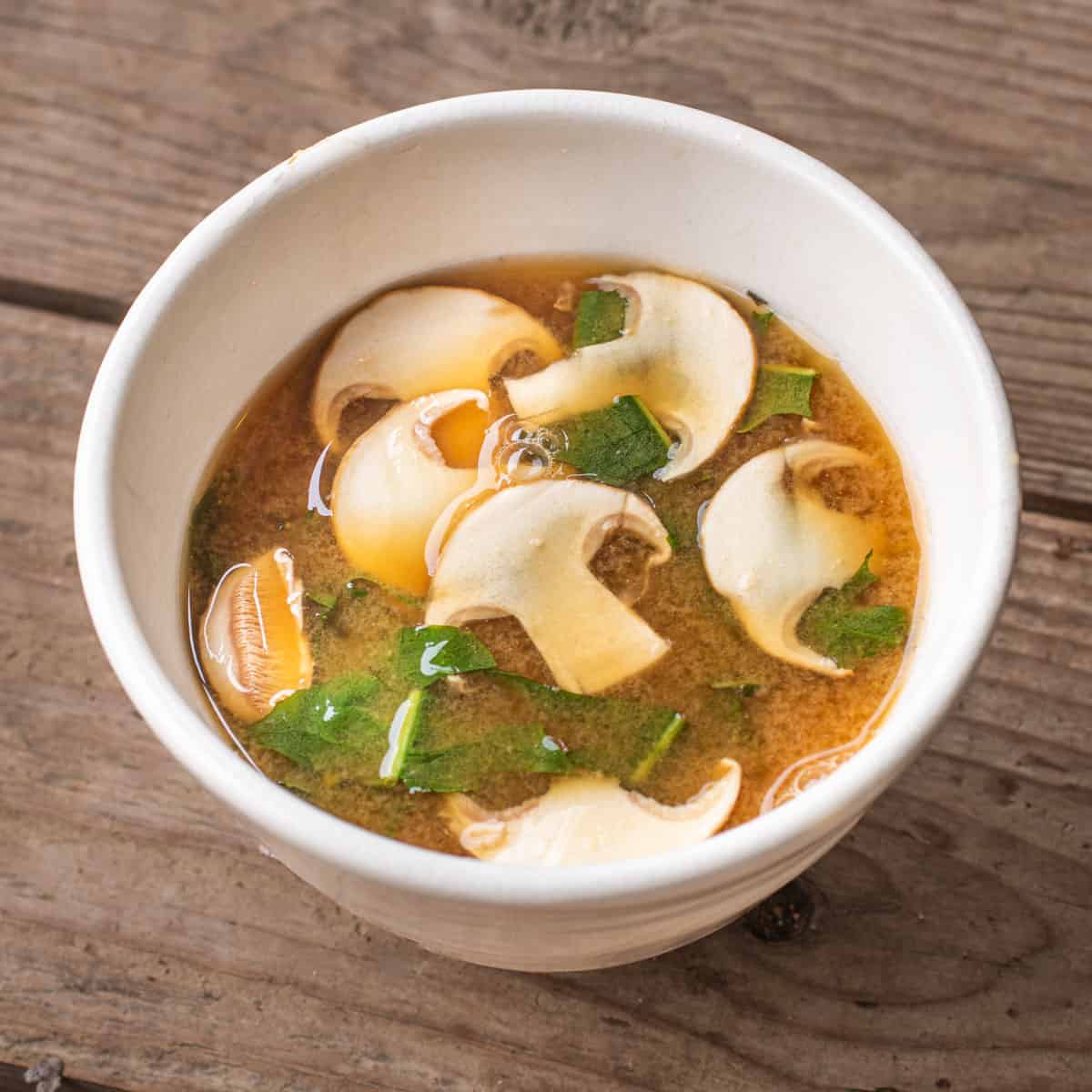
A better method is to wrap them in foil and freeze-the David Arora technique. From there they can be cooked straight from the freezer.
Quick tips
- Matsutake gohan is the most traditional recipe.
- Traditionally the mushrooms are torn into pieces for cooking.
- No butter, cream or cheese should be served with Matsutake.
- Don't combine them with too many things or you won't be able to taste them.
- Cooking matsutake on high heat in a sauté pan will make their aroma waft into the air.
- They pair well with fish and seafood.
- Try grilling them "medium rare" as I share in my post here.
- Try eating them raw for a real treat, drizzled with good tasting oil (especially nut or seed oil) and sprinkled with a pinch of salt.
How to Clean Matsutake for Cooking
Equipment
- 1 paring knife
Instructions
- Trim the matsutake stem of dirt, then peel with a vegetable peeler.
- If the cap is very dirty they can be peeled, which means you'll lose some mushroom, but it's better than having them dirty.
- If the mushrooms still have visible dirt on them, swish them quickly in a sink of cold water.
- Store the mushrooms in the fridge in a Zip Loc bag with a dry paper towel. They'll last for a week if they've very fresh.
Video
Recipes
More
35 Essential Wild Mushrooms Every Forager Should Know
Related Links
Hunting the Minnesota Matsutake II
The Mushroom at the end of the World
Mushroom Expert: T. murillianum


F SUN
Hi, I just bought a package of Dried Matsutake. Never had them before, so goggled and found your site. Any recommendation on how to use them ? The package just says to rinise them in running water to remove debris; then to reconstitute, soak in warm water for 30-60 minutes. I was planning to use them in chicken or pork (neck bone) soup with lots of veggie. Not sure if that is a good ideal after reading your post here.
Thanks very much.
Alan Bergo
Don't put them in vegetable soup, you won't taste them at all. Dried matsutake are nothing like their fresh form, but for the best flavor, and to do them honor, you'll want to use them in something very simple. See my miso soup for an example, also cooking the mushrooms into dashi and then chopping up fine, and using the liquid to cook rice like matsutake gohan could be nice. Hope that helps. Alan
F SUN
Thanks Alan. Glad I asked and you have now given me a different direction to expirment. Will definitely try the miso soup which I just started doing recently as well. Also, using the broth to cook rice sounds interesting; mix my own multi-grain mix, this should be interesting. Thanks and take care.
Martijn Van Boxtel
How best to preserve the matsutake? Is it better to freeze them of dry them?
Alan Bergo
Sweat in a little oil, vacuum seal, and freeze.
Craig W
Greetings. I feel like I may have found many in stage 1 in near Pine County. But given how young and my inexperience, I lack the confidence. The web appears to have information on lookalikes and the results could be grim. My plan is dehydrate some now and track the others to see if I can better ID them. If you have any advice or would like to see pictures, feel free to contact.
Finally, enjoyed your presentation (and eats) this past January at the Lake Superior Mycological club.
Alan Bergo
It would be very, very early for them, but I can take a look at some images. I'll shoot you a message.
Ella
You say how other people describe their aroma. How do you describe it?
Alan Bergo
Like the essence of pine soil. It's almost like it abosorbs resinous compounds from the substrate. Mushroomy, but piney as well. The smell is pretty striking.
Betsy Smith
I just found my first matsutake here in Vermont, you mentioned in one of your comments that you dehydrate them. Do you recommend it? I would hate to loose these guys to a failed effort to keep them. Also, what about saute and freeze?
Thanks!
Betsy
Ruth Peddinghaus
Just picked 15 lbs. in the great Northwest!
So excited! Had to pay $20.00 For a 4 day permit. I'm going out again tomorrow. Can't wait to pare it with my home made Miso.
Alan Bergo
My Favorite mushroom. Congratulations!
nisga'a picker
shave or peel off the outsides and gills then use food dehydrator
Dalanea Hackett
Have you tried drying the matsutake and if so is there a way of drying them so they remain White or as white as possible. The buyers here say that the only way they'll take them dried is if they are white. Tried several times I've gotten them golden but not white. Any suggestions on how to accomplish this.
Alan Bergo
Hmm, I have dried them, but I'm not sure why anyone would insist on only buying them dried if the color is white, that seems odd to me for some reason, but then again, the vagaries of matsutake purchasing traditions in Asia I'm only casually familiar with. That being said, if I want to keep the color of certain mushrooms, I've found that acidic compounds tends to keep colors after cooking, but my experiments have only been with very vibrant mushrooms, like Lactifluus indigo. Maybe you could try dunking them in water seasoned with citric acid, vinegar, or citrus juice, sorry I can't be of more help on this.
J. Michael
I am a matsutake newcomer who has had a very good year collecting this year. I'm curious about your recommendation that they not be cooked with cheeses or cream. Two of my favorite recipes are to put them in a goats milk and cheese quiche, and in a savory goat bread pudding. Their flavor is so strong I'm mixing them 1 part to 2 parts milder mushroom.
Alan Bergo
Hi J, if you like them with cheese or cream, more power to you. Personal preference.